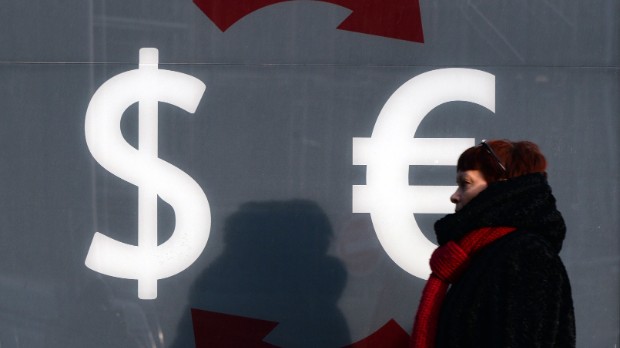The global tech giant Apple (AAPL) is about to launch the most awaited smartphone of the season, the iPhone 6, and the long wait of the gizmo geeks shall end by this September. The upcoming iPhone is expected to have much more new and interesting features, thus attracting the attention of gadget addicts.
Reality or Rumor?
The new iPhone is predicted to have a larger display, in the range of 4.8 inches to 5.5 inches, with 1136x640 pixel resolution. In fact, there is lot of buzz that this year too Apple might launch more than one iPhone just like it did last year in the case of iPhone 5S and iPhone 5C.
The price range of the device is not yet confirmed but it is guessed that the contract-free version might cost around $549 for the 16GB, and $649 for 32GB. Rumors have it that the iPhone will have iOS8 which the Cupertino company is expected to release at the Worldwide Developer Conference scheduled in June. The latest feature in iPhone 6 will be the NFC chip which is a big attraction point for several buyers that will help make things such as mobile payments or making phone calls much easier.
Apple has always provided good storage internal capacity in the iPhones which till now has had a maximum limit of up to 64GB. But this time it has broken all records and set the limit up to 128GB expandable memory, just like that for iPad Air. This new limit for the storage is a boon for music and video addicts who may download and capture more than before.
What's New?
The introduction of sapphire screen in the new iPhone 6 is till now the best feature used. The screen is manufactured by melting aluminum oxide in specialized furnaces. When liquid aluminum oxide is allowed to cool slowly, it forms a large crystal. The sapphire crystal is cut out to form screens. Apple has signed a contract of $578 million with GT Advanced, the sapphire screen company. Rumor goes around that solar charging screens might be used in iPhone 6, but this looks far-fetched as the technology is yet to be released.
Apple is integrating heart rate and blood pressure monitors in the earpods of the headphone. Biggest rival Samsung (SSNLF) had released heart beat monitors at the back of their new smartphone Galaxy S5. It might also provide a slot for expandable storage. Flexible screen and wireless charging are the new features which the rival companies have already adopted but we are not sure yet that these feature will be found in the iPhone 6 or not.
Conclusion
The new iPhone will definitely have new and exciting features that will surely grab the attention of people worldwide and Apple loyalists are eagerly waiting for the launch of this new phone. With distinctive features such as the sapphire screen and the 128 GB memory it is sure to beat the records of all the other smartphones. Analysts are even predicting that the launch of the device will have a positive effect on the share price.
| Currently 0.00/512345 Rating: 0.0/5 (0 votes) | |

Subscribe via Email

Subscribe RSS Comments Please leave your comment:
More GuruFocus Links
| Latest Guru Picks | Value Strategies |
| Warren Buffett Portfolio | Ben Graham Net-Net |
| Real Time Picks | Buffett-Munger Screener |
| Aggregated Portfolio | Undervalued Predictable |
| ETFs, Options | Low P/S Companies |
| Insider Trends | 10-Year Financials |
| 52-Week Lows | Interactive Charts |
| Model Portfolios | DCF Calculator |
RSS Feed  | Monthly Newsletters |
| The All-In-One Screener | Portfolio Tracking Tool |

MORE GURUFOCUS LINKS
| Latest Guru Picks | Value Strategies |
| Warren Buffett Portfolio | Ben Graham Net-Net |
| Real Time Picks | Buffett-Munger Screener |
| Aggregated Portfolio | Undervalued Predictable |
| ETFs, Options | Low P/S Companies |
| Insider Trends | 10-Year Financials |
| 52-Week Lows | Interactive Charts |
| Model Portfolios | DCF Calculator |
RSS Feed  | Monthly Newsletters |
| The All-In-One Screener | Portfolio Tracking Tool |
AAPL STOCK PRICE CHART

589.47 (1y: +36%) $(function(){var seriesOptions=[],yAxisOptions=[],name='AAPL',display='';Highcharts.setOptions({global:{useUTC:true}});var d=new Date();$current_day=d.getDay();if($current_day==5||$current_day==0||$current_day==6){day=4;}else{day=7;} seriesOptions[0]={id:name,animation:false,color:'#4572A7',lineWidth:1,name:name.toUpperCase()+' stock price',threshold:null,data:[[1368680400000,434.578],[1368766800000,433.26],[1369026000000,442.93],[1369112400000,439.66],[1369198800000,441.354],[1369285200000,442.14],[1369371600000,445.15],[1369717200000,441.439],[1369803600000,444.95],[1369890000000,451.58],[1369976400000,449.735],[1370235600000,450.72],[1370322000000,449.31],[1370408400000,445.11],[1370494800000,438.46],[1370581200000,441.811],[1370840400000,438.89],[1370926800000,437.6],[1371013200000,432.19],[1371099600000,435.965],[1371186000000,430.05],[1371445200000,432],[1371531600000,431.77],[1371618000000,423],[1371704400000,416.838],[1371790800000,413.5],[1372050000000,402.54],[1372136400000,402.63],[1372222800000,398.07],[1372309200000,393.78],[1372395600000,396.53],[1372654800000,409.22],[1372741200000,418.49],[1372827600000,420.8],[1373000400000,417.42],[1373259600000,415.05],[1373346000000,422.35],[1373432400000,420.73],[1373518800000,427.288],[1373605200000,426.51],[1373864400000,427.44],[1373950800000,430.195],[1374037200000,430.31],[1374123600000,431.758],[1374210000000,424.95],[1374469200000,426.31],[1374555600000,418.99],[1374642000000,440.51],[1374728400000,438.5],[1374814800000,440.99],[1375074000000,447.79],[1375160400000,453.32],[1375246800000,452.53],[1375333200000,456.676],[1375419600000,462.54],[1375678800000,469.45],[1375765200000,465.25],[1375851600000,464.98],[1375938000000,461.01],[1376024400000,454.45],[1376283600000,467.36],




 ) announced that it has hired on Brad Maiorano, a General Motors (GM
) announced that it has hired on Brad Maiorano, a General Motors (GM



 ) executive, to be the retailer’s chief information security officer – a newly created position.
) executive, to be the retailer’s chief information security officer – a newly created position. Kevin Carreno, IAA Financial's part-owner and general counsel (Photo by Timothy Healy)
Kevin Carreno, IAA Financial's part-owner and general counsel (Photo by Timothy Healy)  Olivier Le Queinec/Shutterstock It's starting to happen again. A buoyant real estate market is starting to birth many of the sights that we saw before the last bubble popped. Late night-infomercials pitching real estate as an investment -- "with little or no money down" -- are hitting the air. Flipping properties is hot again -- and some budding opportunists could get badly burned. What Goes Around ... More and more people are buying houses with the intention of sprucing them up and reselling them at sizable markups a few months later. Why not? Residential real estate prices have been consistently moving higher, especially in the markets that tumbled the most during the financial collapse. Mortgage rates remain reasonable. The economy's improving. What could go wrong? Housing data analytics specialist RealtyTrac reported on Thursday that home flippers made a 30 percent gross return on their short-term purchases through the first three months of this year. That's impressive, and it's going to tempt more casual market observers into the fold. However, the easy money has already been made, and it's going to be a lot more difficult to turn a quick profit on properties in the future. Let's go over five things to watch out for in this now-flawed pursuit for easy cash. 5 Reasons You Might Want to Skip the Flip 1. A 30 percent gross return is not a net return. RealtyTrac's data shows that flippers paid an average of $183,276 on a property investment, selling the house for an average of $238,850 a few months later. That sounds neat, but keep in mind that this doesn't mean pocketing a profit of $55,574. Flippers spend an average of nearly $5,000 to improve the properties they buy to make them more marketable -- about 3.34 percent of the purchase. But the bigger bargains are usually in sorry shape, making them more costly to spruce up. And in depending on where you live, the average price tag gets much higher: As RealtyTrac reports, in Atlanta the median amount spent on improving a flip was $18,250; in San Francisco, it was $13,900. Let's also not forget real estate brokerage commissions that can eat as much as 6 percent of a sale. 2. Carrying costs can be a killer. Anyone who has owned a home can tell you that it's not always a bargain. Utilities may not be as expensive for a vacant home, but taxes and insurance costs accrue between the purchase and the eventual sale. 3. Homebuilders are developing again. One factor helping the housing market's recovery is that real estate developers were forced to the sidelines during the early stages. Folks weren't buying houses, so they had no reason to build more. That has changed lately. Higher prices and rising demand have breathed new life into the construction business. That spike in new supply means flippers aren't just competing against existing properties. Deals may still be there for buyers of distressed properties, but the increased supply will make it harder to sell later. 4. Mortgage rates won't stay low forever. The Federal Reserve kept interest rates low during the long recessionary stretch and its aftermath, but now that the economy's showing genuine signs of life, we're seeing rates inch higher. Mortgage rates have actually been sliding a bit in recent weeks, but they're still almost a full percentage point above where they were during last year's record lows. Higher mortgage rates means fewer people who qualify to borrow the money to buy the homes that flippers are selling. As for investors, higher interest rates give more of an advantage to folks paying all cash for properties to flip. It's not easy to have all that money tied up in a property that may or may not sell a couple of months later. 5. Prices won't keep rising. The combination of the last two points -- more new homes going up and higher mortgage rates -- make it highly unlikely that prices will continue to increase at a rate that makes flipping as profitable as it has been recently. It was fun while it lasted, but it's time for home flippers to find a new way to get rich. More from Rick Aristotle Munarriz
Olivier Le Queinec/Shutterstock It's starting to happen again. A buoyant real estate market is starting to birth many of the sights that we saw before the last bubble popped. Late night-infomercials pitching real estate as an investment -- "with little or no money down" -- are hitting the air. Flipping properties is hot again -- and some budding opportunists could get badly burned. What Goes Around ... More and more people are buying houses with the intention of sprucing them up and reselling them at sizable markups a few months later. Why not? Residential real estate prices have been consistently moving higher, especially in the markets that tumbled the most during the financial collapse. Mortgage rates remain reasonable. The economy's improving. What could go wrong? Housing data analytics specialist RealtyTrac reported on Thursday that home flippers made a 30 percent gross return on their short-term purchases through the first three months of this year. That's impressive, and it's going to tempt more casual market observers into the fold. However, the easy money has already been made, and it's going to be a lot more difficult to turn a quick profit on properties in the future. Let's go over five things to watch out for in this now-flawed pursuit for easy cash. 5 Reasons You Might Want to Skip the Flip 1. A 30 percent gross return is not a net return. RealtyTrac's data shows that flippers paid an average of $183,276 on a property investment, selling the house for an average of $238,850 a few months later. That sounds neat, but keep in mind that this doesn't mean pocketing a profit of $55,574. Flippers spend an average of nearly $5,000 to improve the properties they buy to make them more marketable -- about 3.34 percent of the purchase. But the bigger bargains are usually in sorry shape, making them more costly to spruce up. And in depending on where you live, the average price tag gets much higher: As RealtyTrac reports, in Atlanta the median amount spent on improving a flip was $18,250; in San Francisco, it was $13,900. Let's also not forget real estate brokerage commissions that can eat as much as 6 percent of a sale. 2. Carrying costs can be a killer. Anyone who has owned a home can tell you that it's not always a bargain. Utilities may not be as expensive for a vacant home, but taxes and insurance costs accrue between the purchase and the eventual sale. 3. Homebuilders are developing again. One factor helping the housing market's recovery is that real estate developers were forced to the sidelines during the early stages. Folks weren't buying houses, so they had no reason to build more. That has changed lately. Higher prices and rising demand have breathed new life into the construction business. That spike in new supply means flippers aren't just competing against existing properties. Deals may still be there for buyers of distressed properties, but the increased supply will make it harder to sell later. 4. Mortgage rates won't stay low forever. The Federal Reserve kept interest rates low during the long recessionary stretch and its aftermath, but now that the economy's showing genuine signs of life, we're seeing rates inch higher. Mortgage rates have actually been sliding a bit in recent weeks, but they're still almost a full percentage point above where they were during last year's record lows. Higher mortgage rates means fewer people who qualify to borrow the money to buy the homes that flippers are selling. As for investors, higher interest rates give more of an advantage to folks paying all cash for properties to flip. It's not easy to have all that money tied up in a property that may or may not sell a couple of months later. 5. Prices won't keep rising. The combination of the last two points -- more new homes going up and higher mortgage rates -- make it highly unlikely that prices will continue to increase at a rate that makes flipping as profitable as it has been recently. It was fun while it lasted, but it's time for home flippers to find a new way to get rich. More from Rick Aristotle Munarriz Russians react to ruble collapse NEW YORK (CNNMoney) With the price of oil tanking and the ruble getting pummeled, high-end real estate brokers in Manhattan, Miami and other major cities have been losing some of their best customers.
Russians react to ruble collapse NEW YORK (CNNMoney) With the price of oil tanking and the ruble getting pummeled, high-end real estate brokers in Manhattan, Miami and other major cities have been losing some of their best customers. 
 Donald Trump's Maison de l'Amitie in Palm Beach, Fla. sold to Dmitry Rybolovlev in a record-breaking deal.
Donald Trump's Maison de l'Amitie in Palm Beach, Fla. sold to Dmitry Rybolovlev in a record-breaking deal. 


 jupiterimages To give people an incentive to boost their retirement savings, many employers offer matching contributions for 401(k) plans. But the best match ever doesn't come from any employer. Instead, it comes straight from the U.S. government in the form of the Retirement Savings Contributions Credit, or more simply, the Saver's Credit. For those who qualify, the rewards from participating are simply too good to pass up. The Saver's Credit: Matching on Steroids Many companies offer matching contributions to persuade employees to participate in their employer-sponsored retirement plans. A typical scenario involves you receiving a matching contribution equal to half of whatever you contribute, up to 6 percent of your salary. So if you make $30,000 a year and set aside $150 each month to your 401(k) plan, your employer will add $75 in an employer match, adding $900 over the year. Employer matching is a useful way to get a bigger retirement nest egg. But regardless of whether or not you get matching contributions in your 401(k) -- or even if you don't have access to a 401(k) plan at all -- the Internal Revenue Service offers a tax credit that can give you an even sweeter deal. The Retirement Savings Contributions Credit allows you to have up to $2,000 in contributions to an individual retirement account, 401(k) or similar retirement plan matched with a tax credit. Low-income taxpayers with adjusted gross income of $18,000 or less for single filers or $36,000 or less for joint filers can get 50 percent of their contribution -- as much as $1,000 -- back in the form of a credit. Those who make as much as $30,000 for singles or $60,000 for joint filers can get a smaller credit of 10 percent or 20 percent. Those income thresholds will go up slightly for 2015 contributions, rising by $250 and $500 for the 50 percent credit and by $500 and $1,000 for the smaller credits. Moreover, if you're married, each spouse can take advantage of the Saver's Credit. All told, a family can therefore get up to $2,000 in credits for making $4,000 in contributions. Even better: You can receive the Saver's Credit on top of any employer match. Shortcomings of the Saver's Credit Only those who are 18 or older are eligible for the credit, and anyone who's a full-time student or who gets claimed as a dependent on someone else's tax return doesn't get to claim the credit. The Saver's Credit is a nonrefundable tax credit. That means that if you already have zero tax liability, you can't use the credit to get a refund check from the IRS. Moreover, you can't carry the credit forward or backward to other tax years. That's particularly a problem for many low-income workers at whom the Saver's Credit is primarily targeted, because their tax rates tend to be extremely low, and they often are eligible for other tax breaks that can already reduce their total liability to zero. Nevertheless, if you're eligible and you have a big enough tax bill to make it worthwhile, the Retirement Savings Contributions Credit is one of the most lucrative tax benefits you'll ever get. Those who are entitled to receive the Saver's Credit shouldn't miss out on the opportunity to do so, even if it takes some extra effort to put money aside for your retirement. More from Dan Caplinger
jupiterimages To give people an incentive to boost their retirement savings, many employers offer matching contributions for 401(k) plans. But the best match ever doesn't come from any employer. Instead, it comes straight from the U.S. government in the form of the Retirement Savings Contributions Credit, or more simply, the Saver's Credit. For those who qualify, the rewards from participating are simply too good to pass up. The Saver's Credit: Matching on Steroids Many companies offer matching contributions to persuade employees to participate in their employer-sponsored retirement plans. A typical scenario involves you receiving a matching contribution equal to half of whatever you contribute, up to 6 percent of your salary. So if you make $30,000 a year and set aside $150 each month to your 401(k) plan, your employer will add $75 in an employer match, adding $900 over the year. Employer matching is a useful way to get a bigger retirement nest egg. But regardless of whether or not you get matching contributions in your 401(k) -- or even if you don't have access to a 401(k) plan at all -- the Internal Revenue Service offers a tax credit that can give you an even sweeter deal. The Retirement Savings Contributions Credit allows you to have up to $2,000 in contributions to an individual retirement account, 401(k) or similar retirement plan matched with a tax credit. Low-income taxpayers with adjusted gross income of $18,000 or less for single filers or $36,000 or less for joint filers can get 50 percent of their contribution -- as much as $1,000 -- back in the form of a credit. Those who make as much as $30,000 for singles or $60,000 for joint filers can get a smaller credit of 10 percent or 20 percent. Those income thresholds will go up slightly for 2015 contributions, rising by $250 and $500 for the 50 percent credit and by $500 and $1,000 for the smaller credits. Moreover, if you're married, each spouse can take advantage of the Saver's Credit. All told, a family can therefore get up to $2,000 in credits for making $4,000 in contributions. Even better: You can receive the Saver's Credit on top of any employer match. Shortcomings of the Saver's Credit Only those who are 18 or older are eligible for the credit, and anyone who's a full-time student or who gets claimed as a dependent on someone else's tax return doesn't get to claim the credit. The Saver's Credit is a nonrefundable tax credit. That means that if you already have zero tax liability, you can't use the credit to get a refund check from the IRS. Moreover, you can't carry the credit forward or backward to other tax years. That's particularly a problem for many low-income workers at whom the Saver's Credit is primarily targeted, because their tax rates tend to be extremely low, and they often are eligible for other tax breaks that can already reduce their total liability to zero. Nevertheless, if you're eligible and you have a big enough tax bill to make it worthwhile, the Retirement Savings Contributions Credit is one of the most lucrative tax benefits you'll ever get. Those who are entitled to receive the Saver's Credit shouldn't miss out on the opportunity to do so, even if it takes some extra effort to put money aside for your retirement. More from Dan Caplinger

 Fund holdings in the financials, health care and industrials sectors outperformed those of the benchmark and were among the strongest contributors to relative performance.Shire PLC (LSE:SHP) and Haci Omer Sabanci Holding AS (IST:SAHOL) were among the most significant individual contributors to fund performance during the quarter (2.08% and 1.88% of total net assets, respectively.)Shire (LSE:SHP) is an Irish-based global specialty biopharmaceutical company. The company's stock price rose as it was the object of a takeover bid by a US drugmaker.Haci Omer Sabanci (IST:SAHOL) is a conservatively managed Turkish holding company, of which Akbank T.A.S. is the largest holding. During the second quarter, shares of Haci Omer Sabanci rebounded strongly from a deeply sold-off position at the end of the previous quarter. Improving senti! ment toward Turkey and emerging markets in general drove the stock's rally.Stock selection in the consumer discretionary sector was a key detractor from relative results. An underweight in consumer staples, a sector we still consider overvalued, hurt relative results as well. However, the consumer staples stocks the fund did hold outperformed the index sector.A higher-than-average cash position during the quarter was a drag on results.Balfour Beatty PLC (LSE:BBY) was one of the largest individual detractors from fund performance during the quarter (0.69% of total net assets). Balfour Beatty is a UL-based multi-national infrastructure company with interests in construction and support services and infrastructure investments. The company released a profit warning and announced the possible sale of its professional services business. The UK construction environment remains challenging, particularly for the most profitable large infrastructure projects. However, a rapid rise in construction margins from current low levels should lead to a significant rise in both earnings expectations and investor interest.Positioning and OutlookDuring the quarter, we continued to look for opportunities to improve the portfolio's growth potential and quality by adding and/or selling stocks based on the team's earnings, quality and valuation or EQV outlook for each company. As a result, we added two new holdings to the portfolio and sold four holdings.Additions to the portfolio were German multi-national sporting goods company Adidas AG (XTER:ADS) and UK-based global real estate services provider Savills PLC (LSE:SVS) (0.74% and 0.50% of total net assets, respectively).Weakening fundamentals led to the sale of Swiss multi-national food and beverage company Nestle SA (XSWX:NESN), German telecommunications company Deutsche Telekom AG (XTER:DTE), Belgium-based automobile distributor and services provider D'leteren SA (XBRU:DIE) and UK-based defense and countermeasures company Chemring Group PLC (LSE:CHG) (all 0.00% of t! otal net ! assets).From a broad market perspective, European valuation levels appear favorable relative to other regions but earnings have yet to see a normal recovery from the recession. Japan's correction so far this year has improved valuations, but critical structural reforms in Japan may prove to be elusive in the near term and quality opportunities remain scarce. Emerging markets began to show signs of stabilization, which has increased focus on the region, but most emerging market economics remain fragile, and economic recovery across the region is expected to be in consistent. In sum, we continue to believe that improvements in broad corporate and economic fundamentals are struggling to keep pace with rising expectations for economic acceleration in the second half of 2014.As always, regardless of the macroeconomic environment, we remain focused on our long-term, bottom-up investment approach to identify attractive companies that satisfy our EQV investment process.Continue reading here.Also check out: Invesco European Growth Fund Undervalued Stocks Invesco European Growth Fund Top Growth Companies Invesco European Growth Fund High Yield stocks, and Stocks that Invesco European Growth Fund keeps buying
Fund holdings in the financials, health care and industrials sectors outperformed those of the benchmark and were among the strongest contributors to relative performance.Shire PLC (LSE:SHP) and Haci Omer Sabanci Holding AS (IST:SAHOL) were among the most significant individual contributors to fund performance during the quarter (2.08% and 1.88% of total net assets, respectively.)Shire (LSE:SHP) is an Irish-based global specialty biopharmaceutical company. The company's stock price rose as it was the object of a takeover bid by a US drugmaker.Haci Omer Sabanci (IST:SAHOL) is a conservatively managed Turkish holding company, of which Akbank T.A.S. is the largest holding. During the second quarter, shares of Haci Omer Sabanci rebounded strongly from a deeply sold-off position at the end of the previous quarter. Improving senti! ment toward Turkey and emerging markets in general drove the stock's rally.Stock selection in the consumer discretionary sector was a key detractor from relative results. An underweight in consumer staples, a sector we still consider overvalued, hurt relative results as well. However, the consumer staples stocks the fund did hold outperformed the index sector.A higher-than-average cash position during the quarter was a drag on results.Balfour Beatty PLC (LSE:BBY) was one of the largest individual detractors from fund performance during the quarter (0.69% of total net assets). Balfour Beatty is a UL-based multi-national infrastructure company with interests in construction and support services and infrastructure investments. The company released a profit warning and announced the possible sale of its professional services business. The UK construction environment remains challenging, particularly for the most profitable large infrastructure projects. However, a rapid rise in construction margins from current low levels should lead to a significant rise in both earnings expectations and investor interest.Positioning and OutlookDuring the quarter, we continued to look for opportunities to improve the portfolio's growth potential and quality by adding and/or selling stocks based on the team's earnings, quality and valuation or EQV outlook for each company. As a result, we added two new holdings to the portfolio and sold four holdings.Additions to the portfolio were German multi-national sporting goods company Adidas AG (XTER:ADS) and UK-based global real estate services provider Savills PLC (LSE:SVS) (0.74% and 0.50% of total net assets, respectively).Weakening fundamentals led to the sale of Swiss multi-national food and beverage company Nestle SA (XSWX:NESN), German telecommunications company Deutsche Telekom AG (XTER:DTE), Belgium-based automobile distributor and services provider D'leteren SA (XBRU:DIE) and UK-based defense and countermeasures company Chemring Group PLC (LSE:CHG) (all 0.00% of t! otal net ! assets).From a broad market perspective, European valuation levels appear favorable relative to other regions but earnings have yet to see a normal recovery from the recession. Japan's correction so far this year has improved valuations, but critical structural reforms in Japan may prove to be elusive in the near term and quality opportunities remain scarce. Emerging markets began to show signs of stabilization, which has increased focus on the region, but most emerging market economics remain fragile, and economic recovery across the region is expected to be in consistent. In sum, we continue to believe that improvements in broad corporate and economic fundamentals are struggling to keep pace with rising expectations for economic acceleration in the second half of 2014.As always, regardless of the macroeconomic environment, we remain focused on our long-term, bottom-up investment approach to identify attractive companies that satisfy our EQV investment process.Continue reading here.Also check out: Invesco European Growth Fund Undervalued Stocks Invesco European Growth Fund Top Growth Companies Invesco European Growth Fund High Yield stocks, and Stocks that Invesco European Growth Fund keeps buying 
 MORE GURUFOCUS LINKS
MORE GURUFOCUS LINKS  49.15 (1y: +104%) $(function(){var seriesOptions=[],yAxisOptions=[],name='LSE:SHP',display='';Highcharts.setOptions({global:{useUTC:true}});var d=new Date();$current_day=d.getDay();if($current_day==5||$current_day==0||$current_day==6){day=4;}else{day=7;} seriesOptions[0]={id:name,animation:false,color:'#4572A7',lineWidth:1,name:name.toUpperCase()+' stock price',threshold:null,data:[[1375160400000,24.14],[1375246800000,24.02],[1375333200000,24.4],[1375419600000,24.42],[1375678800000,24.05],[1375765200000,23.92],[1375851600000,23.74],[1375938000000,23.78],[1376024400000,23.87],[1376283600000,23.73],[1376370000000,23.93],[1376456400000,23.87],[1376542800000,23.7],[1376629200000,23.85],[1376888400000,24.09],[1376974800000,24.17],[1377061200000,24.05],[1377147600000,24.35],[1377234000000,24.25],[1377579600000,24.22],[1377666000000,23.73],[1377752400000,24.05],[1377838800000,23.77],[1378098000000,23.98],[1378184400000,23.87],[1378270800000,24.05],[1378357200000,24.32],[1378443600000,24.45],[1378702800000,24.42],[1378789200000,24.66],[1378875600000,24.86],[1378962000000,24.85],[1379048400000,24.77],[1379307600000,25.33],[1379394000000,25.51],[1379480400000,25.26],[1379566800000,25.42],[1379653200000,25.93],[1379912400000,25.2],[1379998800000,24.89],[1380085200000,24.77],[1380171600000,24.73],[1380258000000,24.67],[1380517200000,24.78],[1380603600000,25.05],[1380690000000,24.46],[1380776400000,24.4],[1380862800000,24.54],[1381122000000,24.5],[1381208400000,24.18],[1381294800000,23.87],[1381381200000,23.81],[1381467600000,24.45],[1381726800000,24.56],[1381813200000,24.9],[1381899600000,25.13],[1381986000000,25.14],[1382072400000,25.37],[1382331600000,25.15],[1382418000000,24.93],[13
49.15 (1y: +104%) $(function(){var seriesOptions=[],yAxisOptions=[],name='LSE:SHP',display='';Highcharts.setOptions({global:{useUTC:true}});var d=new Date();$current_day=d.getDay();if($current_day==5||$current_day==0||$current_day==6){day=4;}else{day=7;} seriesOptions[0]={id:name,animation:false,color:'#4572A7',lineWidth:1,name:name.toUpperCase()+' stock price',threshold:null,data:[[1375160400000,24.14],[1375246800000,24.02],[1375333200000,24.4],[1375419600000,24.42],[1375678800000,24.05],[1375765200000,23.92],[1375851600000,23.74],[1375938000000,23.78],[1376024400000,23.87],[1376283600000,23.73],[1376370000000,23.93],[1376456400000,23.87],[1376542800000,23.7],[1376629200000,23.85],[1376888400000,24.09],[1376974800000,24.17],[1377061200000,24.05],[1377147600000,24.35],[1377234000000,24.25],[1377579600000,24.22],[1377666000000,23.73],[1377752400000,24.05],[1377838800000,23.77],[1378098000000,23.98],[1378184400000,23.87],[1378270800000,24.05],[1378357200000,24.32],[1378443600000,24.45],[1378702800000,24.42],[1378789200000,24.66],[1378875600000,24.86],[1378962000000,24.85],[1379048400000,24.77],[1379307600000,25.33],[1379394000000,25.51],[1379480400000,25.26],[1379566800000,25.42],[1379653200000,25.93],[1379912400000,25.2],[1379998800000,24.89],[1380085200000,24.77],[1380171600000,24.73],[1380258000000,24.67],[1380517200000,24.78],[1380603600000,25.05],[1380690000000,24.46],[1380776400000,24.4],[1380862800000,24.54],[1381122000000,24.5],[1381208400000,24.18],[1381294800000,23.87],[1381381200000,23.81],[1381467600000,24.45],[1381726800000,24.56],[1381813200000,24.9],[1381899600000,25.13],[1381986000000,25.14],[1382072400000,25.37],[1382331600000,25.15],[1382418000000,24.93],[13



 Popular Posts: Shale Boom, IPO Boom – 5 New Energy Stocks to BuyWhiting Buys Kodiak – A Big Energy Deal With Potential to Spare (KOG, WLL)4 Solar Stocks to Buy After the Selloff Recent Posts: 4 Solar Stocks to Buy After the Selloff Was That a Hawkish Cry From Yellen? — Morning Linkfest (July 16) Earnings, Earnings, & More Earnings – Morning Linkfest (July 15) View All Posts 4 Solar Stocks to Buy After the Selloff
Popular Posts: Shale Boom, IPO Boom – 5 New Energy Stocks to BuyWhiting Buys Kodiak – A Big Energy Deal With Potential to Spare (KOG, WLL)4 Solar Stocks to Buy After the Selloff Recent Posts: 4 Solar Stocks to Buy After the Selloff Was That a Hawkish Cry From Yellen? — Morning Linkfest (July 16) Earnings, Earnings, & More Earnings – Morning Linkfest (July 15) View All Posts 4 Solar Stocks to Buy After the Selloff  Source: ©iStock.com/arcady_31
Source: ©iStock.com/arcady_31  The recent broad market selloff has given investors the opportunity to buy solar stock leader First Solar (FSLR) at a cheaper price than just a few weeks ago.
The recent broad market selloff has given investors the opportunity to buy solar stock leader First Solar (FSLR) at a cheaper price than just a few weeks ago. Photovalic panel producer? Check. Utility scale solar facilities? Check. Residential solar installations? Check again. SunPower (SPWR) does it all and is quickly becoming the best all-around solar play.
Photovalic panel producer? Check. Utility scale solar facilities? Check. Residential solar installations? Check again. SunPower (SPWR) does it all and is quickly becoming the best all-around solar play. For solar stock SunEdison (SUNE), it's all about transformation.
For solar stock SunEdison (SUNE), it's all about transformation. If you're going to buy one Chinese solar stock, it has to be Trina Solar Limited (TSL). As one of the oldest and most financially stable panel and systems producers in the nation, TSL has the goods to get through any solar hiccups due to recent trade disputes.
If you're going to buy one Chinese solar stock, it has to be Trina Solar Limited (TSL). As one of the oldest and most financially stable panel and systems producers in the nation, TSL has the goods to get through any solar hiccups due to recent trade disputes. AP
AP  Virgin Galactic's SpaceShipTwo crashes NEW YORK (CNNMoney) NBC is developing a reality TV series called "Space Race" with Virgin Galactic, whose SpaceShipTwo exploded on Friday.
Virgin Galactic's SpaceShipTwo crashes NEW YORK (CNNMoney) NBC is developing a reality TV series called "Space Race" with Virgin Galactic, whose SpaceShipTwo exploded on Friday.  Two food production companies recalled nearly 60,000 pounds of chicken products because of possible staph and Salmonella contamination, the Agriculture Department's Food Safety and Inspection Service said. A third company recalled 377 pounds of broccoli kale salad with chicken. Murray's Inc. of Lebanon, Pennsylvania, on Sunday recalled 31,689 pounds of gluten free breaded chicken products that may be contaminated with Staphylococcal enterotoxin, the FSIS said. The products are dated Aug. 9 and were packed in 12-ounce and 10.5-ounce boxes under the Bell & Evans brand. The problem was discovered by the Colorado Department of Agriculture during a retail surveillance and sampling program. Staphylococcal food poisoning is a gastrointestinal illness. Aspen Foods Division of Koch Meats of Chicago on Saturday recalled 28,980 pounds of chicken products that may be contaminated with Salmonella Enteritidis, FSIS said. The chicken was sold under the Antioch Farms brand name in five-ounce packets with sell-by dates of Oct. 1 and Oct. 7. Salmonellosis produces diarrhea, abdominal cramps and fever within 72 hours of consumption. Taylor Farms of Swedesboro, New Jersey, on Saturday recalled 377 pounds of Signature Cafe Broccoli Kale Salad with chicken for misbranding that neglected to list walnuts among the ingredients. The salads were sold in 9.75-ounce plastic clam shell packages with use-by dates of Oct. 23, 25 and 27.
Two food production companies recalled nearly 60,000 pounds of chicken products because of possible staph and Salmonella contamination, the Agriculture Department's Food Safety and Inspection Service said. A third company recalled 377 pounds of broccoli kale salad with chicken. Murray's Inc. of Lebanon, Pennsylvania, on Sunday recalled 31,689 pounds of gluten free breaded chicken products that may be contaminated with Staphylococcal enterotoxin, the FSIS said. The products are dated Aug. 9 and were packed in 12-ounce and 10.5-ounce boxes under the Bell & Evans brand. The problem was discovered by the Colorado Department of Agriculture during a retail surveillance and sampling program. Staphylococcal food poisoning is a gastrointestinal illness. Aspen Foods Division of Koch Meats of Chicago on Saturday recalled 28,980 pounds of chicken products that may be contaminated with Salmonella Enteritidis, FSIS said. The chicken was sold under the Antioch Farms brand name in five-ounce packets with sell-by dates of Oct. 1 and Oct. 7. Salmonellosis produces diarrhea, abdominal cramps and fever within 72 hours of consumption. Taylor Farms of Swedesboro, New Jersey, on Saturday recalled 377 pounds of Signature Cafe Broccoli Kale Salad with chicken for misbranding that neglected to list walnuts among the ingredients. The salads were sold in 9.75-ounce plastic clam shell packages with use-by dates of Oct. 23, 25 and 27.

